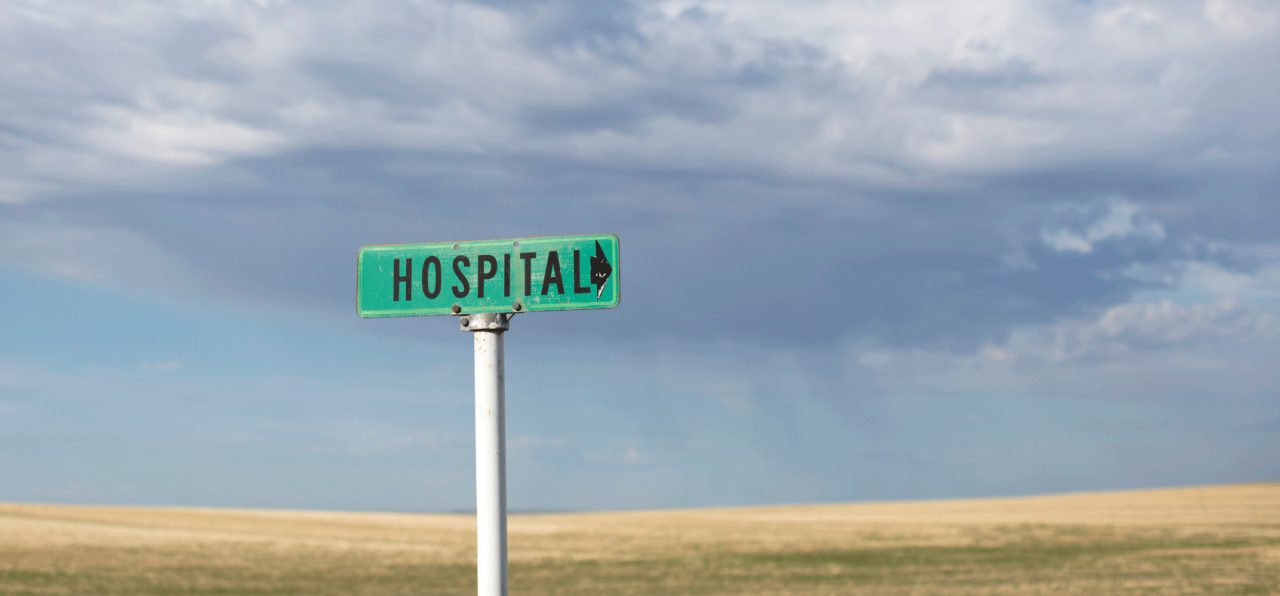Rural Stroke Victims May Live Too Far from Health Facilities

In rural states, millions of stroke victims may suffer if first responders have long drives to reach a stroke center.
It can take time for an ambulance to navigate country roads for an emergency. Once the paramedics arrive, they face another question: Where should they take you? If a healthcare facility is miles away, help may come too late to minimize disability or keep a stroke victim alive.
Every year nearly 800,000 Americans suffer a stroke, most of them for the first time. Most of these events are ischemic strokes, when a clot blocks the flow of blood to the brain. Getting blood flow restored should happen as quickly as possible to prevent long-term damage. That’s why, for years, paramedics have rushed stroke patients to the nearest hospital for clot-busting medication and other care.
Now the choice is more complex. Specialists can insert a catheter and pry out the clot. But in rural areas especially, the specialists will be further away.
YOU MIGHT ALSO LIKE: Stroke Warning Signs
If you (or someone in your vicinity) has a stroke in an underserved area
Don’t try to drive someone to the hospital yourself or let an onlooker drive you — even to save time. Paramedics can help a stroke patient during transport to a hospital. They also have the experience to decide which hospital is closest or best for the patient.
It may help to know stroke guidelines so you understand their choice. If it appears that a clot is severe and blocking one of the brain’s major arteries, the American Heart and Stroke associations recommend traveling up to an extra 30 minutes in urban areas and 60 minutes in rural areas to reach a hospital with stroke specialists. A catheter removal must happen within 24 hours.
If the stroke is less severe, a shorter trip to a hospital that can supply medication to break up the clot sooner is still a better idea. The medication, delivered through an IV, must be given within 4½ hours of when symptoms start.
Rural areas are underserved
According to one analysis, in Arkansas, Mississippi, West Virginia, Louisiana, and Alabama, more than half the population must be driven more than 45 minutes to reach a hospital that can provide advanced stroke care. Large chunks of the residents are that far from even basic stroke care.
In Kentucky, half of the population is 45 minutes from an advanced care center, and in Tennessee the number is 30 percent.
Meanwhile, hospitals are shutting down. Since 2010, rural residents lost 147 hospitals.
Another problem is that doctors without experience treating stroke may hesitate to give clot-busting medication. In some cases — less than 7 percent — the medication can cause bleeding in the brain. According to a national study, stroke patients were less likely to receive needed medications in rural hospitals than urban ones, and they were more likely to die. Programs that connect doctors from smaller hospitals by phone with an on-call stroke specialist elsewhere are an emerging alternative. A specialist can give them confidence.
What are the signs of stroke?
The Centers for Disease Control and Prevention recommends the following test, which you must do FAST:
- F — Face: Ask the person to smile. Does one side of the face droop?
- A — Arms: Ask the person to raise both arms. Does one arm drift downward?
- S — Speech: Ask the person to repeat a simple phrase. Is the speech slurred or strange?
- T — Time: If you see any of these signs, call 9-1-1 right away.
Low blood sugar (hypoglycemia) may cause symptoms similar to a stroke. But you need to be sure. Note when symptoms began.
In a transient ischemic attack (TIA), the symptoms may go away in minutes, and you may be tempted to ignore them. That’s a mistake. Even a TIA requires medical help to discover the underlying cause.
While waiting for an EMT or paramedic to arrive
Have the suspected stroke victim lie down. Their airway should be open (you can lift a victim’s chin). If they aren’t breathing, perform cardiopulmonary resuscitation (CPR).
When victims are breathing but unconscious, roll them onto their side. (Do not move the person if you suspect a head, neck, or back injury.)
Try to reassure and comfort them if they’re conscious. Loosen constricting clothing or jewelry. When victims have trouble swallowing, try to turn them onto their side. Do not offer any food or drink.
What are the risk factors for stroke?
The main risk factor for stroke is high blood pressure. Other risk factors include tobacco smoking, obesity, high cholesterol, type 2 diabetes, a previous TIA, end-stage kidney disease, and atrial fibrillation.
Updated:
March 21, 2023
Reviewed By:
Janet O'Dell, RN